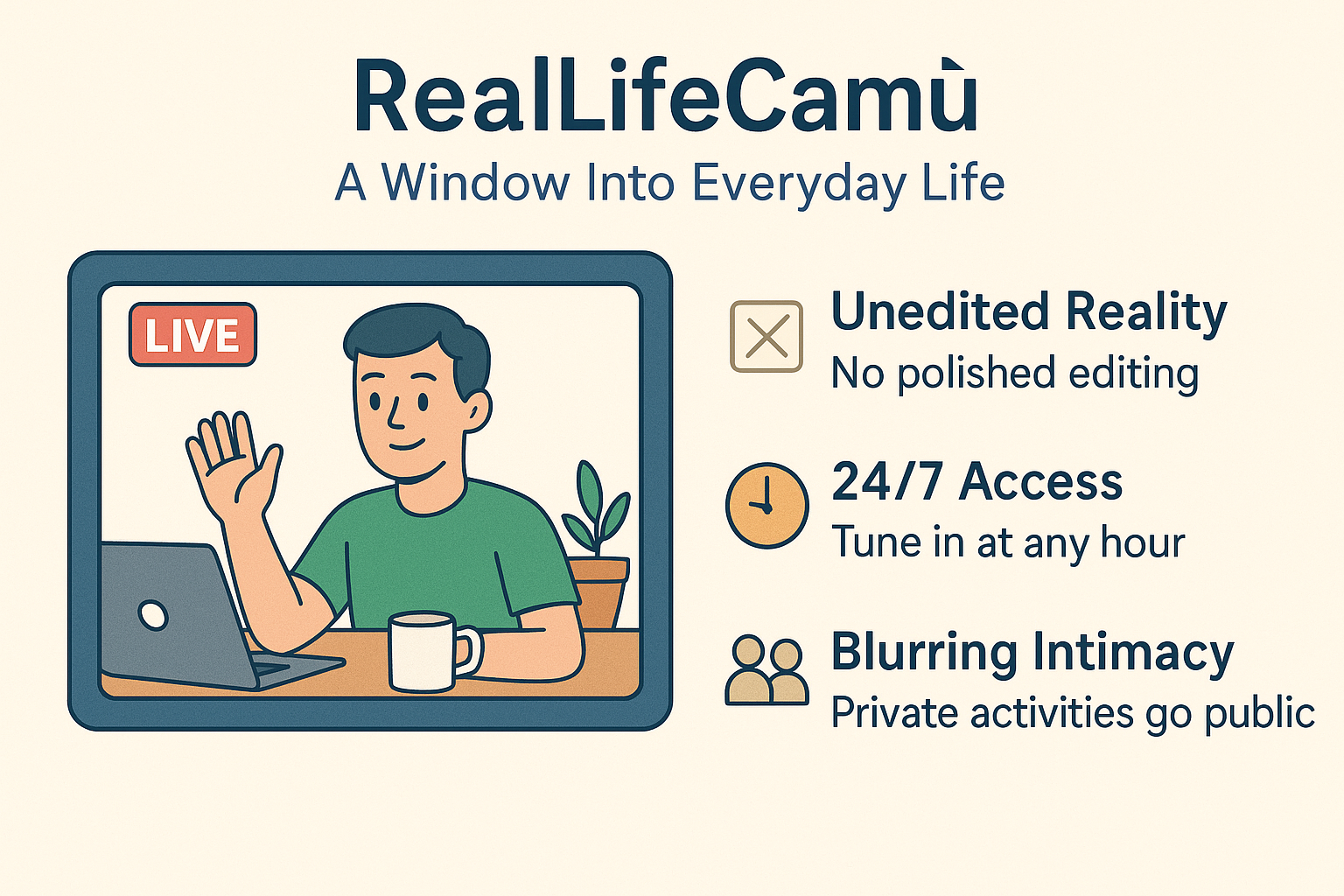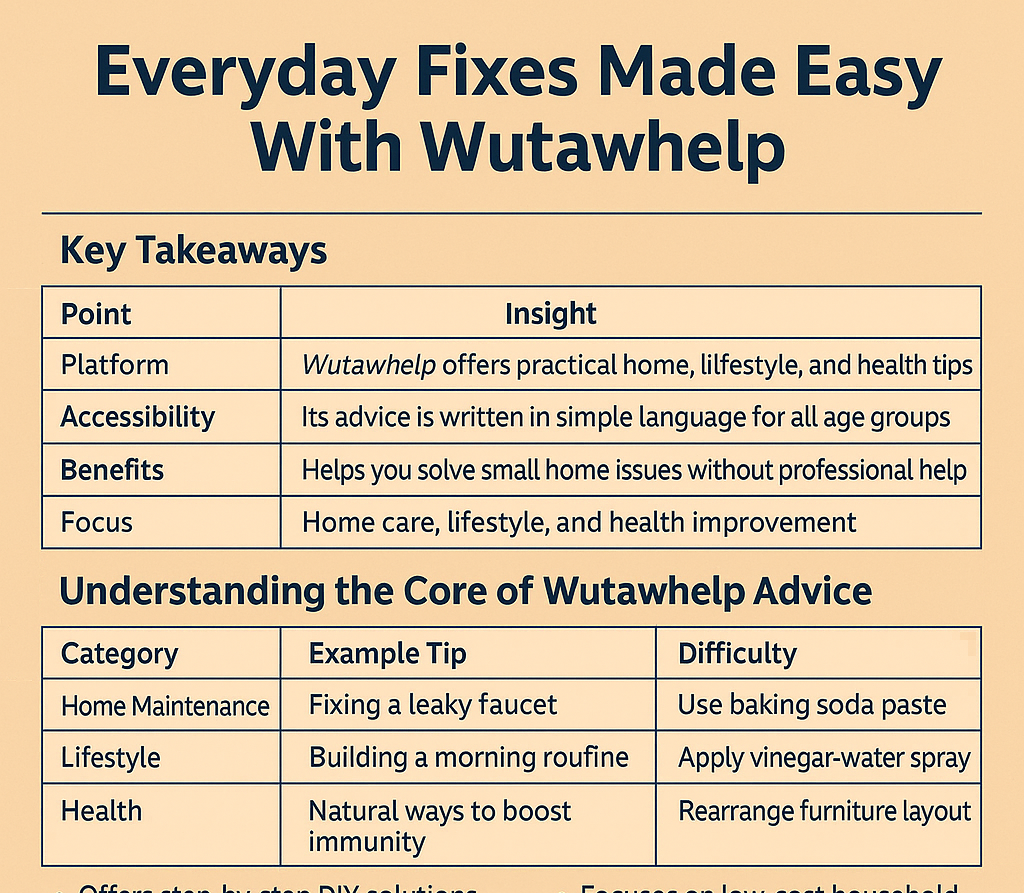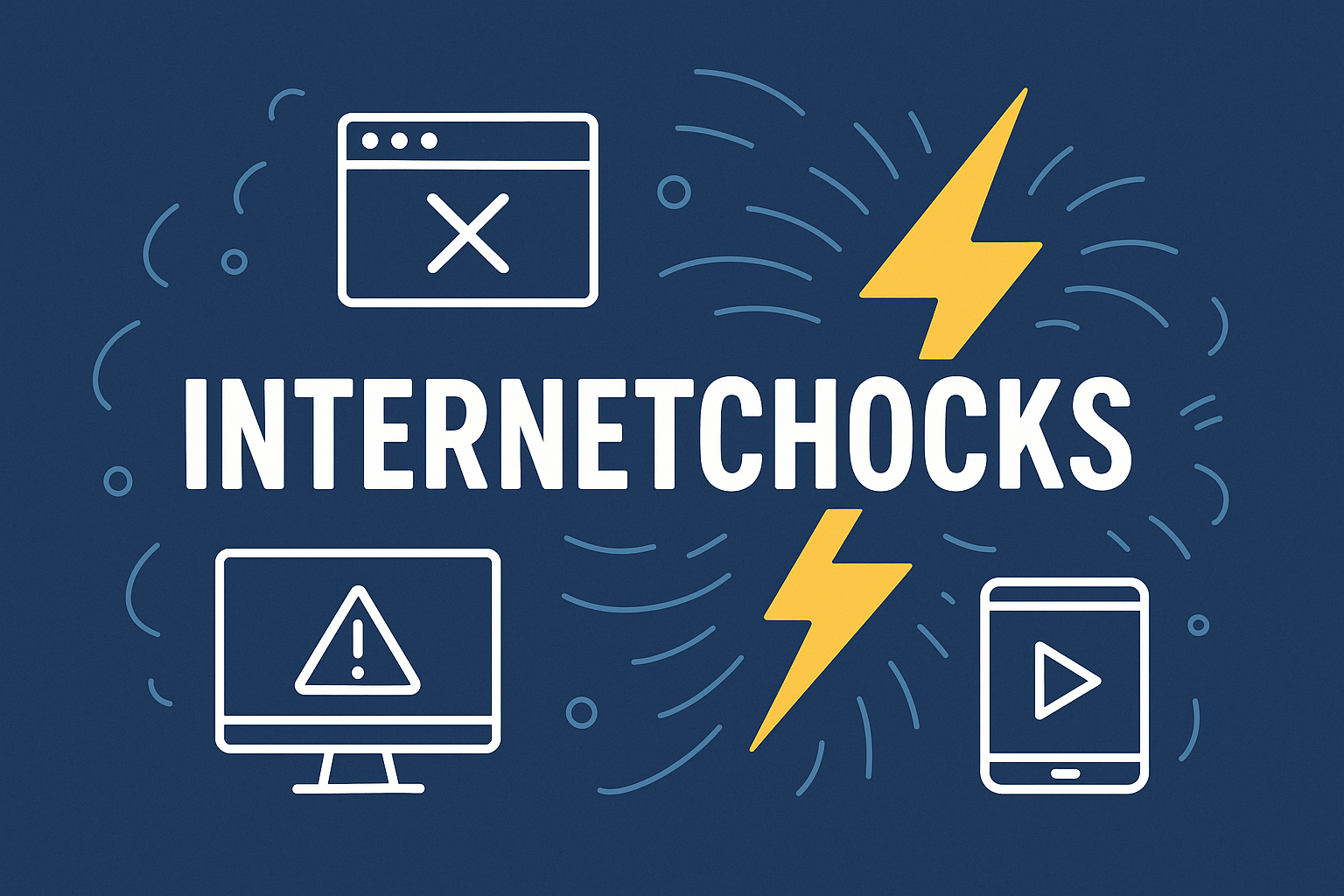Key Takeaways
| Aspect | Description |
|---|---|
| Concept | RealLifeCamù turns daily life into a 24/7 livestream of reality. |
| Purpose | To share authentic, unedited moments and explore the “poetry of the ordinary.” |
| Impact | Challenges privacy norms, entertainment habits, and digital intimacy. |
| Core Entities | RealLifeCamù, livestreaming, social media, digital anthropology, privacy, viewer psychology |
The Rise of RealifeCamù
| Topic | Details |
|---|---|
| Origin | RealifeCamù emerged as a twist on traditional livestreaming—focusing on daily routines instead of curated content. |
| Inspiration | Influenced by early reality shows like Big Brother and platforms such as Twitch, but stripped of performance. |
| Appeal | Viewers connect with raw, unscripted moments that feel real, immediate, and deeply human. |
RealifeCamù began as an experiment: What if everyday life itself became the show? Unlike YouTube or Instagram, it doesn’t rely on filters, editing, or performance. Instead, participants live under cameras—cooking, working, or napping—broadcasting reality without pause.
This uncut transparency turns the ordinary into spectacle. For some, it’s calming; for others, it’s addictive. Digital anthropologists note that the appeal lies not in drama but in watching life unfold without manipulation—a kind of “human documentary in motion.”
Core Insights
- RealifeCamù democratizes visibility—anyone can be a “star” just by existing online.
- It exposes how audiences crave authenticity amid algorithmic feeds.
- Its success shows that unfiltered life can be more magnetic than fiction.
Behind the Lens: Technology and Surveillance
| Technology | Function |
|---|---|
| HD Cameras | Capture multiple angles in real time, offering panoramic coverage of private spaces. |
| Cloud Streaming | Uses content delivery networks (CDNs) to ensure global access without lag. |
| Data Analytics | Tracks viewer behavior, watch time, and emotional reactions to live events. |
The infrastructure behind RealifeCamù mirrors that of advanced surveillance systems. Every corner of a participant’s home can be monitored through IoT-connected cameras. Data from these streams flows into AI-powered analytics tools, which study viewing patterns—what time people watch, what moments they replay, and even how long their attention holds.
This blend of AI, machine learning, and livestreaming makes RealifeCamù both an innovation and a cautionary tale. Privacy advocates argue it normalizes being watched. Meanwhile, tech enthusiasts see it as an evolution of digital presence—a step toward metaverse-style immersion in real life.
Key Points
- Every RealifeCamù feed runs on low-latency protocols similar to those used by Netflix or YouTube Live.
- Facial recognition algorithms may catalog emotional responses in real time.
- This infrastructure overlaps with technologies used in public surveillance and AI monitoring.
The Human Connection: Viewers and Voyeurs
| Perspective | Behavior |
|---|---|
| Casual Viewers | Drop in occasionally, seeking relaxation or curiosity. |
| Regular Watchers | Form emotional bonds with streamers, noticing habits or moods. |
| Super Fans | Track routines obsessively, sometimes sending gifts or comments. |
For many, RealifeCamù feels like companionship. You’re not watching actors—you’re watching people live. The parasocial relationships that form echo those once found between audiences and television hosts but now feel far more personal.
Psychologists suggest this constant exposure creates a sense of digital intimacy, where watchers feel emotionally close despite never meeting. Yet, this bond can blur boundaries. Some viewers forget they’re outsiders. Some participants, seeking connection, perform even subtle parts of their life differently.
Emotional Dynamics
- Viewers may project friendship or affection onto streamers they’ve never met.
- The illusion of access builds trust—and sometimes dependency.
- RealifeCamù becomes a mirror reflecting both loneliness and belonging in the digital age.
Privacy on Display: The Ethics of Exposure
| Concern | Description |
|---|---|
| Consent | Participants agree to livestream but may underestimate the permanence of digital archives. |
| Boundaries | Everyday tasks—like eating or resting—become public property. |
| Security | Continuous feeds can reveal addresses, patterns, or private interactions. |
The paradox of RealifeCamù lies in its voluntary loss of privacy. Cultural theorists compare it to a panopticon—a space where visibility equals control. While the participants consent, the audience’s gaze is endless and unregulated.
Even small details—a reflection in a mirror, a routine walk—can expose information to millions. Cybersecurity experts warn that archived streams can be scraped, analyzed, and reused without consent. Once online, nothing truly disappears.
Still, many users see RealifeCamù as empowerment. They reclaim visibility on their own terms, choosing what to share and when. It’s both self-expression and social experiment, challenging what “private” really means in a connected world.
Ethical Takeaways
- Privacy online isn’t lost—it’s traded for attention.
- Transparency can empower but also exploit.
- Regulations lag far behind real-time digital broadcasting ethics.
The Cultural Impact: From Art to Anthropology
| Field | RealLifeCamù Influence |
|---|---|
| Media Studies | Redefines storytelling by removing scripts and editing. |
| Anthropology | Studies daily life patterns and collective behavior in real time. |
| Sociology | Examines how viewers interact and form digital communities. |
In academia, RealifeCamù fascinates scholars. Cultural anthropologists, like Dr. Thomas Hylland Eriksen, describe it as “a performance of normalcy.” It transforms ordinary acts—making coffee, stretching, typing—into cultural data. Researchers use it to understand human behavior under observation and how social norms shift when visibility becomes constant.
Artists, too, are inspired. Some museums have featured RealifeCamù installations, turning live streams into immersive exhibits. These projects blur lines between documentary, performance art, and social science.
Notable Influences
- Echoes earlier works like Andy Warhol’s Sleep (1963), where a man simply slept on camera.
- Extends ideas from reality television into the always-on internet age.
- Provides raw datasets for digital ethnography and behavioral studies.
The Future of the Ordinary
| Forecast | Possible Outcome |
|---|---|
| AI Integration | Smarter cameras detecting emotions or automating edits. |
| Monetization Models | Subscription tiers, virtual gifting, and real-time interactions. |
| Societal Shifts | New norms of exposure and digital empathy emerging. |
As AI grows more sophisticated, RealLifeCamù could evolve into something hybrid—part livestream, part simulation. Imagine cameras that auto-highlight emotional peaks or algorithms predicting when something “interesting” might happen.
Platforms may gamify everyday life, rewarding users for maintaining routines. This creates a blend of social validation and algorithmic pressure—turning living into content. Whether this future feels dystopian or liberating depends on how we define connection, privacy, and reality itself.
Speculative Insights
- Virtual reality may merge with RealLifeCamù to create participatory observation.
- Governments could explore ethical frameworks for digital self-broadcasting.
- Everyday life will remain the ultimate stage for human storytelling.
Read also Ashley Nikkii Ellison: The Silent Pulse Behind Frank Ocean
A World Always Watching
RealLifeCamù reflects a paradox of modern life: the hunger to be seen and the fear of being known. It’s proof that even in an age of artificial perfection, there’s beauty in imperfection—the rhythm of the real.
As digital culture keeps evolving, one truth remains: authenticity connects us deeper than any filter ever could.
So whether you’re streaming, watching, or just living—remember that reality, not curation, is the truest performance of all.



